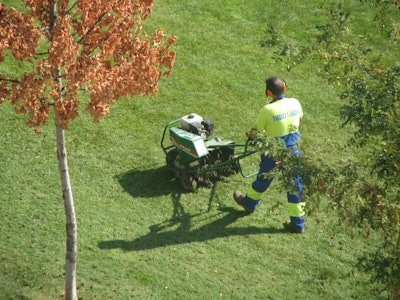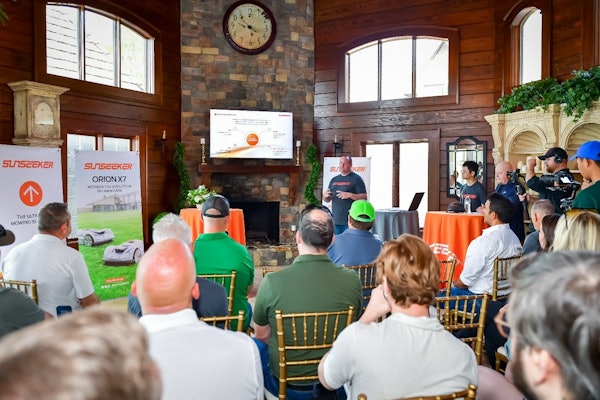 Photo: Wikipedia
Photo: WikipediaSeptember has arrived and with it comes prime time for fall aeration. Aeration is an important step of lawn care that can often be skipped by homeowners and professionals alike, but the practice allows air, water, and fertilizer to reach the turf roots by punching holes through the soil to reduce compaction.
Compaction can occur from the normal lawn uses of walking, playing, or mowing grass. This is a problem because it can impede root growth.
Aeration works by not only making those holes throughout the soil but also leaving the soil cores to lay in the turf where they will naturally decompose. This process helps with overall soil composition. Many landscape contractors say that it's one of the most important things that can be done to promote overall lawn health. It's a service best performed in the fall in most parts of the country, as this is also the best time for new seedling growth. The cooler air temperatures but still-warm soil give seeds the best chance at germination.
How to add aeration
Adding aeration as a service requires minimal investment and can help give your company an edge over other lawn care companies that only offer mowing services. Stimulating the growth of the turf can help it to fill in patchy areas and defend against disease and even weeds. It's often said that the best defense against weeds is a thick and healthy lawn that crowds these invaders out.
When it comes to adding on the service, you’ll need to determine whether you will buy or rent your aerator, and this all depends on your cash flow, number of clients interested in aeration and service frequency.
Locations with sandy soils require infrequent aeration due to less compaction, but areas with clay soil will need regular attention.
There are three types of aerators to choose from when it comes to equipment, and the model you select will depend on the type of property you service.
The stand-on is suitable for extensive residential properties or multiple commercial properties and is faster than a walk-behind model. But if you work on a lot of smaller properties, a walk-behind could certainly do the job. The third option is the tow-behind aerator, which is a better option for larger areas when a towing vehicle is available.
Estimating job cost
When it comes to estimating jobs, calculate your overhead and consider the labor costs, equipment costs and time spent aerating. Knowing what your competitors’ prices are helps, but don’t bid lower than you can afford.
You can try to get creative with your pricing strategy, as some landscapers offer a set price per square foot with an upcharge for additional acreage, while others offer aeration as a package along with overseeding or lawn renovation to provide added value to a homeowner.
One of the best ways to get the most out of aeration is to carry out the service one or two days after rain. Moist soil allows for deeper penetration and rain or irrigation after aeration also helps the cores break down.
As far as selling this service, education is the best thing that you can do. Helping clients understand that aeration will help them achieve a thicker and healthier lawn will encourage them to add this service.









